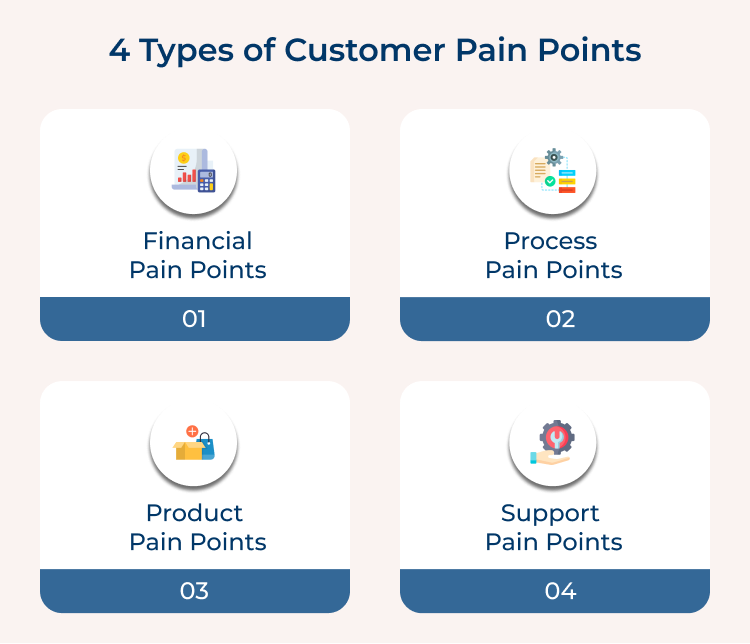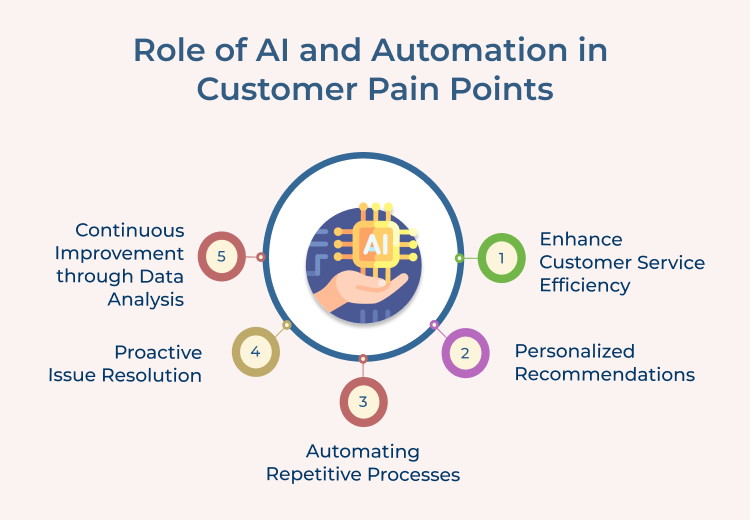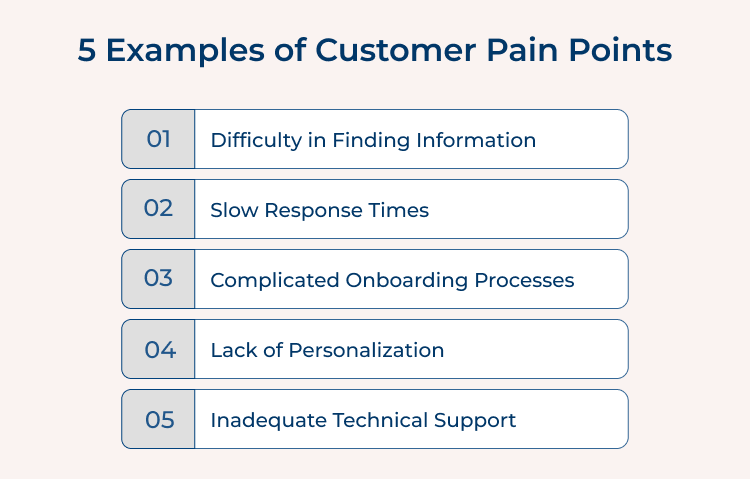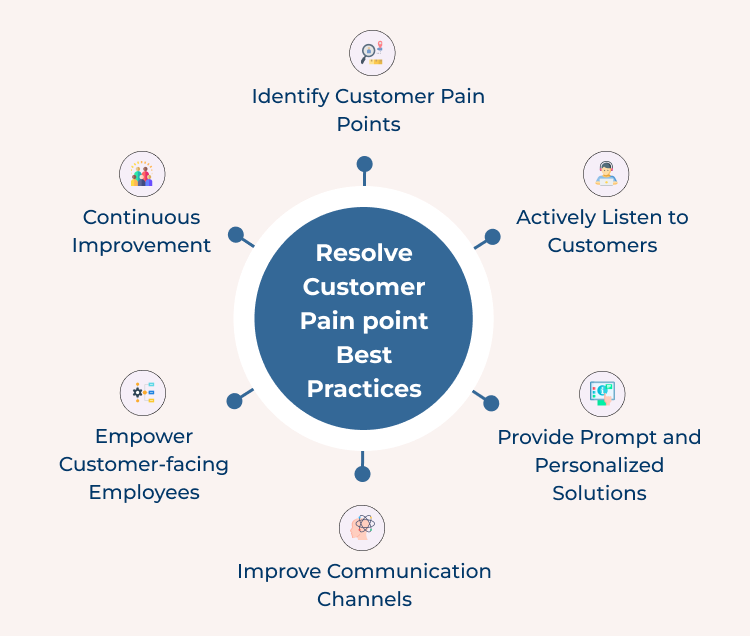1. Conduct Market Research
Thorough market research helps to understand the target audience. Conduct extensive research via surveys, interviews, and focus groups to gather insights. It helps to understand their needs, frustrations and expectations. You can also identify common pain points across your customer base.
For example, a company that specializes in skincare products might conduct surveys and interviews with their target market to understand customers’ needs better. The data can then be used to develop innovative solutions that resonate with their target audience.
Here are three tips for conducting effective market research to identify customer pain points:
- Combine qualitative and quantitative methods: Make use of both qualitative methods (like interviews, focus groups) and quantitative methods (like surveys, data analysis). Qualitative methods can provide in-depth insights, while quantitative data can reveal patterns and trends.
- Dive deep into customer feedback: Actively listen to your customers by analyzing feedback from various sources such as product reviews, customer support inquiries, and social media comments. Look for patterns that indicate common pain points and areas for improvement.
- Keep an eye on your competitors: Monitor your competitors’ activities and customer reviews to identify pain points that may be overlooked. Look for gaps in meeting customer expectations. By addressing these pain points, you can gain a competitive edge.
2. Listen to Customer Feedback
Actively listen to customer feedback from various channels such as social media, customer support interactions, and online reviews. These insights can provide valuable clues about customer pain points.
Customer feedback is a valuable tool for businesses to identify and address customer pain points.
For example, a customer leaves a review stating that the checkout process on an e-commerce website is confusing. Such feedback highlights a pain point and allows the business to take action.
Tips for effectively listening to customer feedback:
- Regularly monitor feedback channels: Stay active on platforms like social media and review sites to address feedback promptly. It showcases that you value customer opinions and are committed to improving their experience.
- Actively engage with customers: Responding to feedback shows that you genuinely care about customer satisfaction. Ask follow-up questions and thank customers for their input. Engaging in a conversation helps gain deeper insights into their pain points and builds trust.
- Analyze and implement changes: Collect feedback data to identify recurring pain points. Use the information to prioritize improvements. Regularly evaluate the impact of these changes and adapt accordingly to meet customer needs better.
3. Analyze Data and Analytics
Leverage data and analytics tools to analyze customer behavior, purchase patterns, and engagement metrics. Analyzing data and analytics is crucial when it comes to identifying customer pain points.
For example, a company can utilize website analytics to determine the pages where visitors spend the least amount of time or where they frequently exit the site. By identifying these areas, the company can pinpoint potential pain points and address them accordingly.
Key tips to effectively analyze data and analytics for identifying customer pain points:
- Track customer behavior: Utilize tools such as Google Analytics to track customer behavior on your website. Look for patterns that may indicate pain points, such as high bounce rates or low conversion rates on specific pages.
- Conduct surveys and feedback: Gather direct feedback from your customers through surveys or feedback forms. Ask them about their experiences, what challenges they faced and what improvements they would like to see.
- Monitor social media and reviews: Keep an eye on social media platforms and review sites to see what customers are saying about your products or services. Look for common complaints or negative feedback, which can indicate potential pain points that need to be addressed.
4. Monitor Social Media Conversations
Social media platforms provide a treasure trove of information about customer pain points. Monitor social conversations, comments, and discussions related to your industry. Look for keywords that indicate frustration, challenges, or unmet needs. Engaging with customers directly in these conversations can provide valuable insights.
For example, in the fitness industry and notice that a lot of people are complaining about not having enough time to exercise. It could be a common pain point among your target audience.
Tips for effectively monitoring social media conversations to identify customer pain points:
- Use social listening tools: Utilize social listening tools like Hootsuite, Mention, or Sprout Social to track mentions of your brand. These tools allow you to monitor conversations in real-time.
- Pay attention to sentiment analysis: Analyzing the sentiment of social media conversations can provide valuable insights into customer pain points. Look for negative sentiments as they often indicate challenging areas.
- Engage and ask questions: Actively engage with customers on social media by asking questions and encouraging them to share their experiences and challenges. It can help uncover pain points that may not be readily apparent through passive monitoring.
5. Use Customer Surveys
Create customer surveys to gather specific feedback on pain points. Design questions that are focused on understanding the challenges customers face, their expectations and any barriers they experience during their interaction with your brand. Ensure the survey is brief and concise to encourage higher response rates.
Customer surveys are a valuable tool for identifying and understanding customer pain points.
For example, a software company can distribute a survey to its customers, asking about their biggest challenge/s when using the product. It will provide insights into specific pain points and allow the company to make improvements.
In order to maximize the effectiveness of customer surveys, here are some tips:
- Keep it short and simple: Customers are more likely to complete surveys that are brief and easy to understand. Avoid asking too many questions or using complicated language.
- Use a variety of question types: Incorporating multiple question types, such as multiple-choice, rating scales, and open-ended questions, allows customers to express themselves in different ways and provides more comprehensive feedback.
- Offer incentives: Consider offering incentives like discounts, freebies, or chances to win prizes. It increases survey response rates and shows customers that their feedback is valued.
Examples of Customer Pain Points
Customer pain points are the specific problems or challenges that customers face, which can hinder their satisfaction and overall experience with a product or service.









